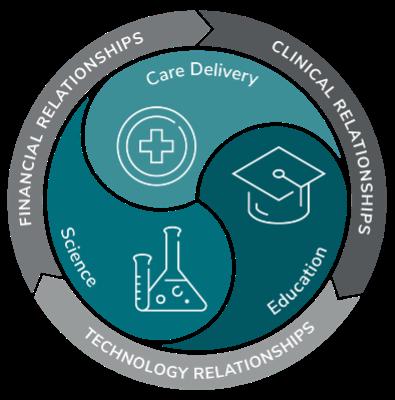Year in Review Life Sciences

For The Year Ended June 30, 2022






We recognize that the wellbeing of peoples and communities is inextricably tied to health, education and scientific advancement. That’s why WittKieffer exclusively serves organizations aligned to these areas of impact, as we have for more than 50 years. We help our clients navigate this ever-evolving and complex world by using our unique insight to identify and enable exceptional leadership. We precisely tune our services to the needs of each client – whether non-profit or for-profit – delivering high impact executive search, interim leadership and leadership advisory solutions.
Get to know us. You’ll find a remarkable organization – one that delivers unmatched service, that adheres to fundamental values guiding all our work and that understands the power of leadership to produce positive outcomes for people, organizations and communities.
Impactful Leadership means having the right people doing the right things and engaging with each other in ways that build value for their people, their organizations and their communities.
Through the last year, we deepened our commitment to Impactful Leadership across the Quality of Life Ecosystem. We now offer an integrated array of services that support our clients in building and developing leadership teams to successfully navigate an ever-evolving and complex world.

WittKieffer’s global Life Sciences Practice continues to expand its team and ability to serve clients globally. In the past year, we doubled our number of consultants in order to offer clients boutique-level service on a global scale. Our whole team works collaboratively and seamlessly around the world, drawing on our consultants’ diverse life and professional experiences across cultures and languages.
We are also distinguished by our expertise and integration across related disciplines, including close collaboration with our colleagues in Healthcare, Commercial Healthcare and Academic Medicine and Health Sciences
For us, a successful search is one which considers our clients’ diversity needs. Given our commitment to improving the quality of life through impactful leadership, advancing leadership diversity is a cornerstone of our work.
• Digitization permeates nearly every aspect of the life sciences industry, from quantum computing and AI-enabled development to consumer relationships.
• Pressure and oversight on price transparency and the interaction between commercial pharma companies and healthcare practitioners are increasing.
• Capital risk re-allocation, with limited public IPO funding, will change the fundraising landscape for many companies – particularly those with marginal science or market opportunities.
• Virtualization of clinical trials expands patient-centricity trends, potentially reducing cost and time of studies.
• Increased regulatory oversight of new drug development, including intended use redefinition, will add further pressure in already risk-modulating environments.
• Managing corporate lifecycle stages successfully is a perennial challenge in life sciences. With the potential for accelerated development cycles, compression of life cycle stages will exacerbate this challenge. Whether for PE, VC, or publicly-backed companies, boards must anticipate the unique abilities needed from CEOs and their teams at each stage and adjust hiring and succession planning accordingly. It’s worthwhile to consider interim leadership should candidates with the appropriate skillset and mindset not be readily available ahead of or at key lifecycle transition points.
• The organizational culture required to drive strategic progression varies with each lifecycle transition, including those precipitated by ownership changes such as M&A, where culture clashes can doom the most promising of ventures. Leaders must proactively nurture when and how the culture needs to shift (and what will remain constant), recognizing the implications for their own behaviors as well as organizational processes.
• The preceding trends and the likelihood that global pricing disparities will be forced to compress, put the very business model of life sciences at a tipping point. Executive teams that begin to wrestle with the transformational implications of these trends will find themselves better suited to emerge healthy through and after the transition. This includes aligning leadership teams to the needs of the present and the future, which may require creating new working relationships, accountabilities and metrics of performance. Boards and CEOs also may start to look to other industries for leaders experienced in navigating different lower margin, supply chain driven and complex operations.
• While not new in concept to life sciences, the nature of partners and partnering is fundamentally shifting as new intersections of science,
• Decentralized clinical trials, remote monitoring and other tech-enabled solutions offer the opportunity to speed clinical development and reduce time-to-market, potentially offsetting some of the regulatory overhang.
• Growth in combination therapies continues, providing new market opportunities but complicating licensing and partnering relationships.
• The emergence of commercial cell and gene therapy products is redefining legacy market access processes and manufacturing infrastructure.
• Investments continue in cell and gene therapy development and manufacturing capacity by academic centers, biotech incubators and independent research institutions.
care delivery and education evolve. Partners are more likely to be substantially different in phenotype, (e.g., technology firms, hospital systems and even big retailers). This will demand new partnering models that reflect novel approaches to sharing value, data and information, consumer relationships and digital connectivity.
• The future of life sciences requires enterprise leadership, which itself requires leaders to think and act beyond traditional organizational boundaries, lead inclusively, balance drive with empathy, have the courage to collaborate and the humility to learn and find comfort in ambiguity based on their own sense of purpose and meaning. Enterprise leaders should be prioritized when hiring new executives. Given the scarcity of such leaders, organizations mitigate their risks by proactively planning for succession and executive development a few layers from the C-suite, when the chances of shaping mindsets and building relationships that will bear fruit are high.
• CEOs also can address individual enterprise leader scarcity by defining, creating and sustaining true enterprise leadership teams, which enable the whole to be greater than the sum of its parts. This requires CEOs to establish and maintain three conditions:
1. team ambition that informs the team’s collective work, not just their individual “day jobs,” uniting them to manage the difficult paradoxes the organization as a whole faces;
2. team structure and processes that enable and inform decision-making and problem-solving, to make the most of their collective talents and speed execution “outside of the room”;
3. explicit, demonstrated norms (“rules of engagement”) that encourage transparency, psychological safety and trust so that the power of diverse thinking can be realized.
